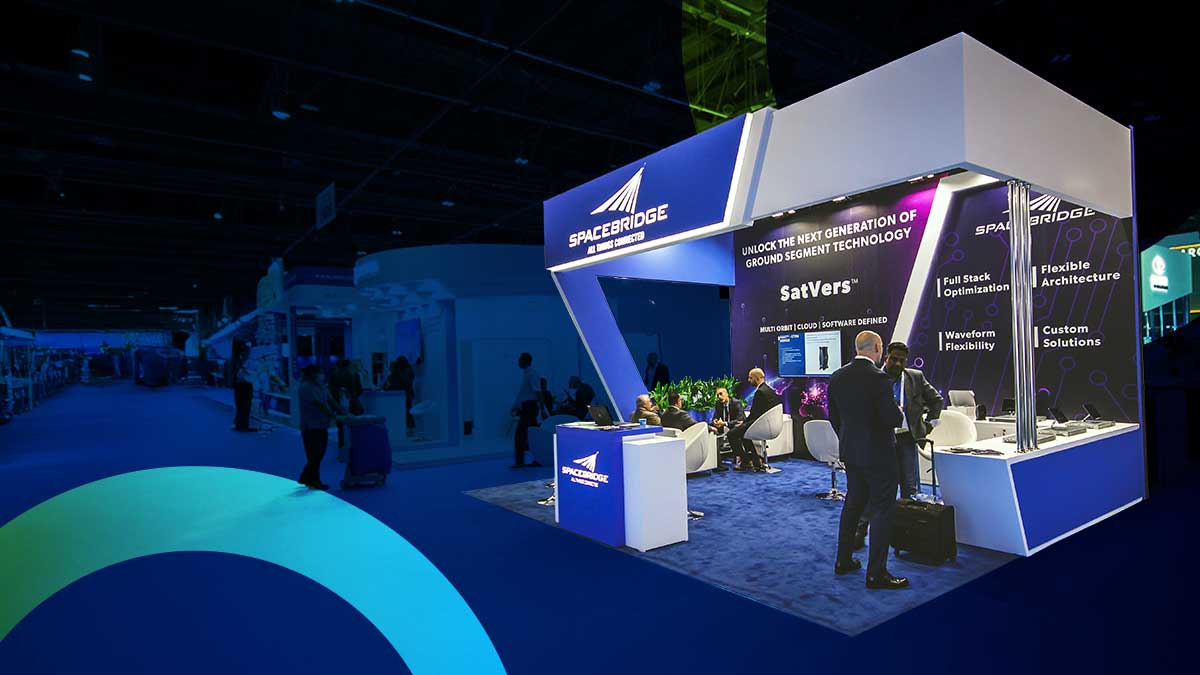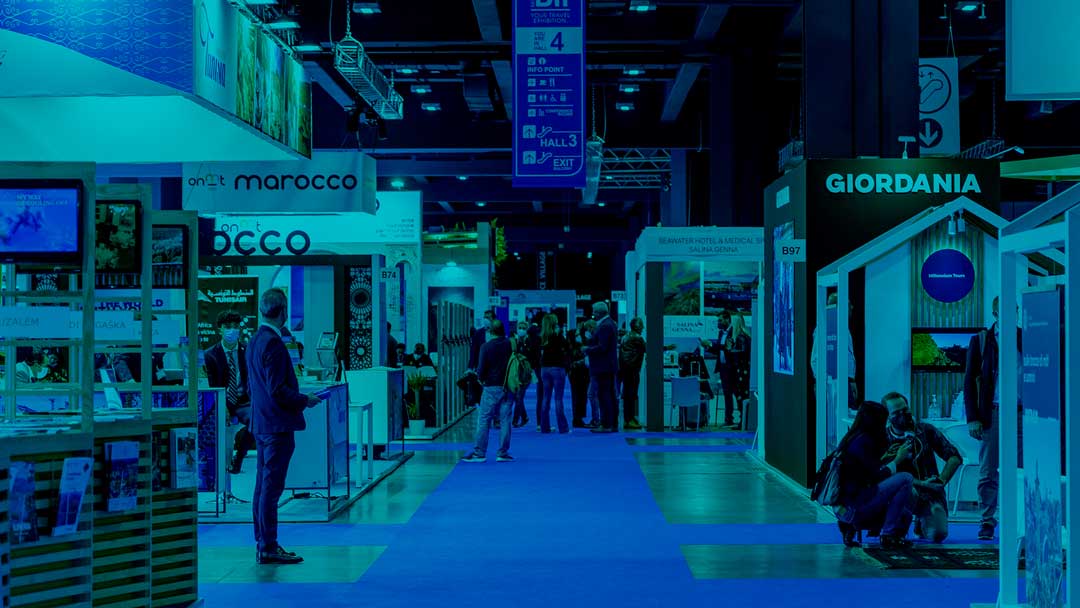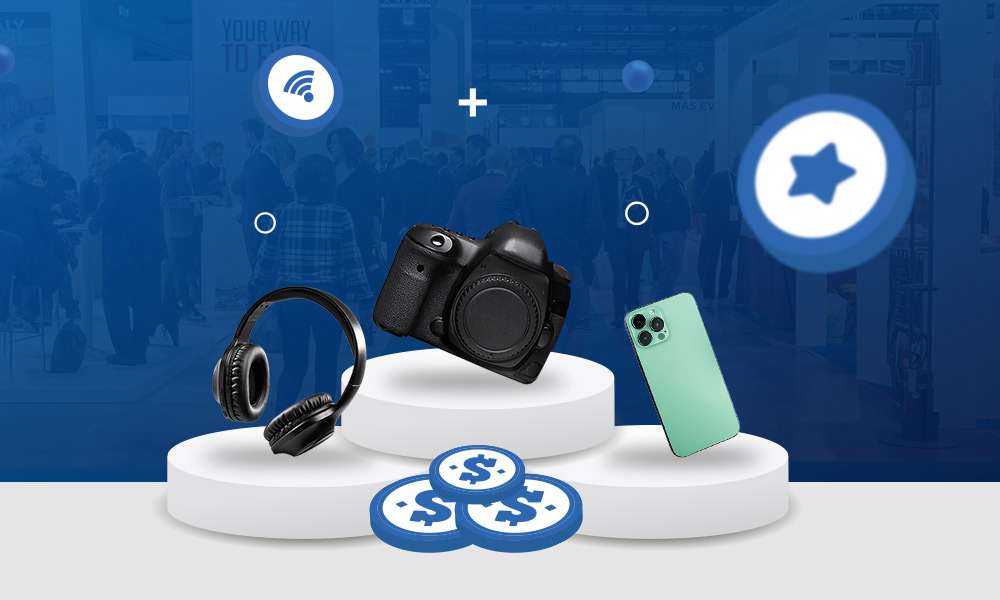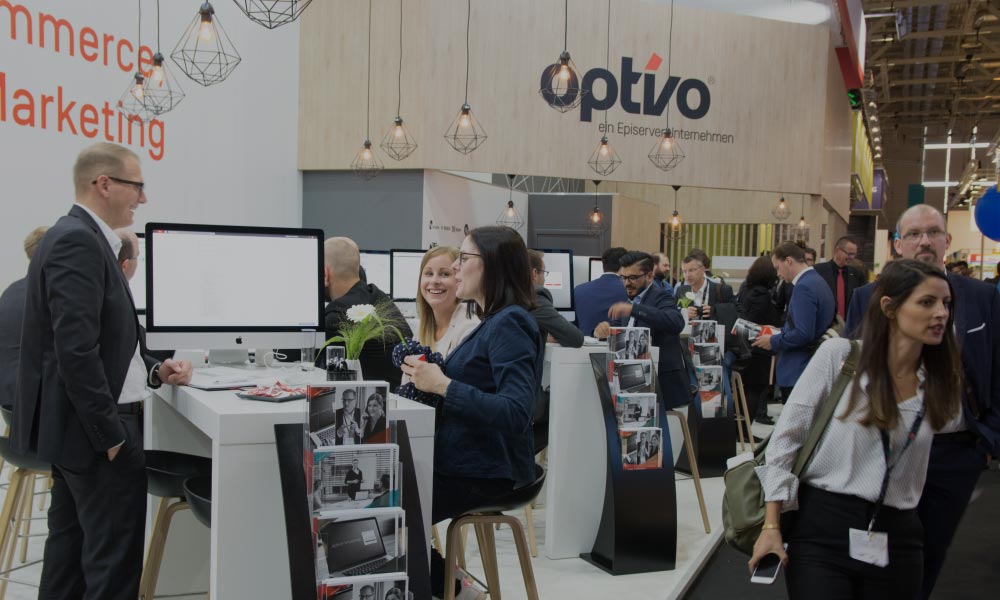Why Trade Show Booth Accessibility Matters for B2B?
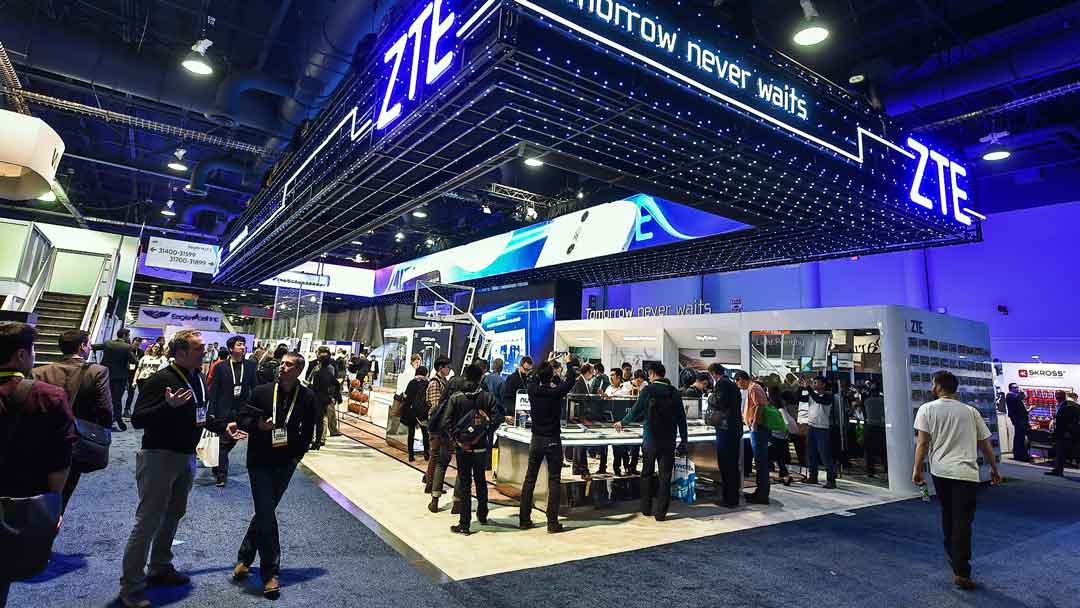
Trade shows are a powerhouse for networking and brand exposure, but is your booth accessible to all? By prioritizing trade show booth accessibility, you’re not just accommodating everyone but setting a new standard.
Embracing comprehensive accessibility goes beyond basic requirements; it involves thoughtful, inclusive design that ensures all participants have an enriching experience regardless of ability. Dive deeper into why making your trade show booth universally accessible isn’t just good practice—it’s essential for truly connecting with your audience.
Why Make Your Trade Show Booth Accessible?
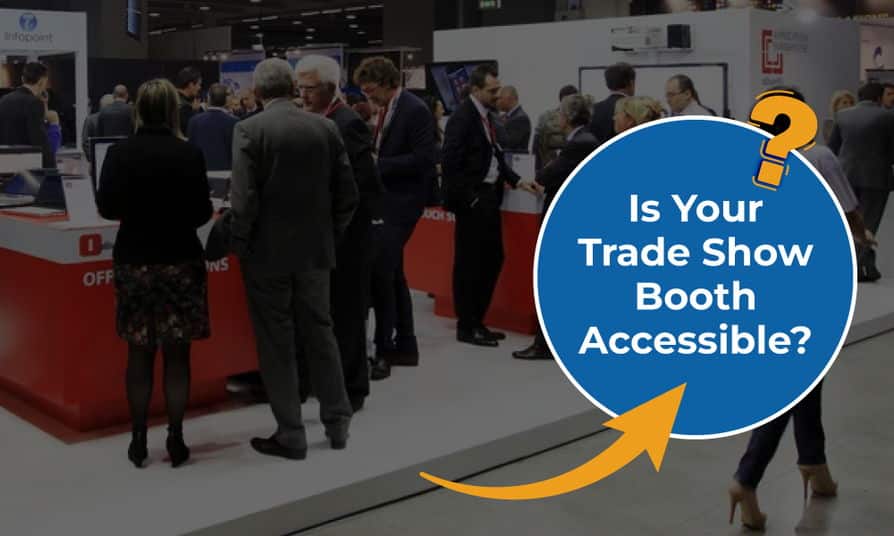
Feel yourself navigating the vibrant energy of a trade show. Each booth is a unique experience, beckoning you to discover their story and innovations. But for millions of people, these spaces become obstacles instead of opportunities. Let’s explore the reasons why we should make our trade show accessible:
Expand Market Reach
Think of your booth as a bright light that attracts all attendees, including those with disabilities. Making a simple trade show booth attracts more people and different customers, helping you reach more connections and expand.
This isn’t just about accessibility; it’s about widening your market reach in the most inclusive way possible. That’s the heart of accessible trade show booth design—it’s about opening your arms wide, saying, “Everyone is welcome here.”
Positive Brand Image
When your booth embodies inclusive trade show practices, it speaks volumes about your brand’s values. Dedication to diversity and inclusion goes beyond just checking a box—it tells a story about your company’s values. It’s important to make everyone feel included when you shake hands or have a conversation with them.
Compliance with Regulation
Picture a scenario where everyone can effortlessly interact with your booth regardless of their capabilities. This isn’t about ticking boxes for ADA compliance in trade shows; it’s about weaving inclusivity into your brand’s presence.
Inclusive trade show booths are a testament to a brand’s commitment to welcoming everyone and showcasing that innovation and accessibility can go hand in hand.
Increased Engagement
An accessible booth is a welcoming booth. By removing barriers to interaction, you create a space where all visitors feel valued and included. This level of engagement is not just about immediate interaction; it’s about building long-term relationships that thrive on inclusivity and understanding.

Improved Brand Reputation
By ensuring your booth is accessible, you’re expanding your brand’s reach to include individuals with disabilities and enhancing your company’s image as a socially responsible and inclusive entity.
This approach to inclusive marketing at trade shows does more than just open doors to new business opportunities; it builds bridges, fostering a sense of community and understanding that transcends the conventional norms of B2B marketing.
Key Elements of an Accessible Trade Show Booth
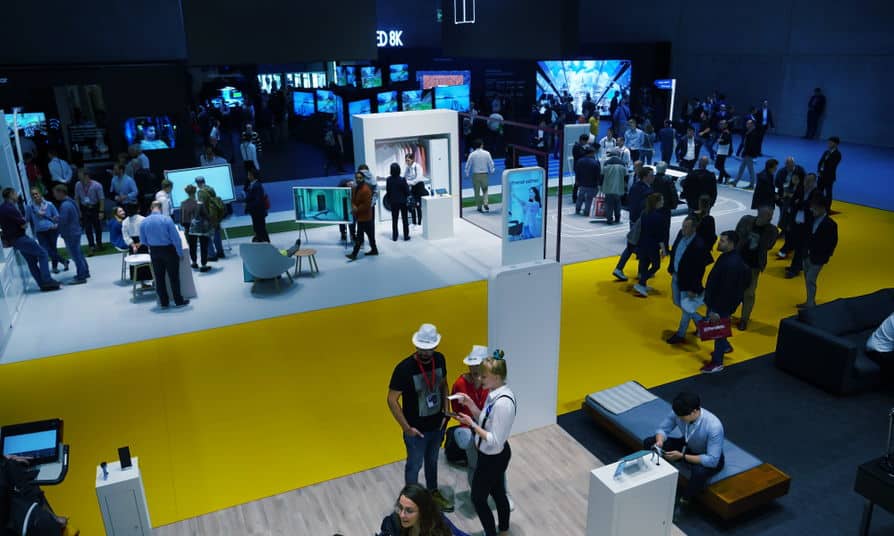
Exploring the essentials of what makes a trade show booth truly accessible, let’s examine the key elements that turn intentions into actions, ensuring every participant feels welcomed and valued:
Physical Accessibility
Physical accessibility is about removing physical barriers that can prevent individuals with disabilities from fully participating in the trade show experience. This involves carefully planning and designing the booth space to ensure it is navigable, comfortable, and engaging for everyone, including those who use mobility aids or have other physical limitations.
- Location: It’s crucial to select a booth location that’s well-lit and open. This choice ensures that individuals who use mobility aids, such as wheelchairs or walkers, have unobstructed access to your space. A prime spot also encourages more straightforward navigation and a welcoming atmosphere.
- Layout: A thoughtfully designed layout emphasizing spacious pathways and marked, designated seating areas makes your booth inviting and accessible. Such planning ensures that all visitors can move freely and comfortably engage with your offerings regardless of mobility challenges.
- Display Heights: Accessibility extends to the visibility and reachability of your displays. Positioning your materials at heights accessible from a wheelchair—not too high or too low—ensures that every attendee can interact with your content without physical strain.
- Flooring: The choice of flooring can significantly impact the accessibility of your booth. Opt for smooth, slip-resistant materials to minimize trip and fall risk. Conscient cable management and avoiding loose electrical cords across pathways can prevent potential hazards.
- Signage: Effective signage involves more than just visibility. It should be clear, concise, and feature large, readable fonts. Such signage aids visually impaired attendees and helps everyone quickly grasp your messages and navigate your space.
Communication Accessibility

Communication accessibility ensures that all attendees can receive and understand the presented information, regardless of sensory or cognitive disabilities.
This encompasses not only the way information is conveyed verbally by staff but also the availability of assistive devices, the provision of materials in alternative formats, and the accessibility of digital content.
- Staff Training: Well-informed staff are key to an inclusive booth experience. Training in disability etiquette and inclusive communication equips your team to interact knowledgeably and respectfully with all visitors, ensuring a positive experience for everyone.
- Assistive Devices: Offering devices like magnifying glasses for reading small print and headsets for audio descriptions can make your booth more accessible to visitors with visual or hearing impairments. These tools are essential for ensuring that everyone can access and understand your content.
- Alternative Formats: Providing promotional materials in various formats—such as Braille for the blind or audio recordings for the visually impaired—demonstrates a comprehensive approach to inclusivity. This practice ensures that all visitors can engage with your information regardless of their sensory abilities.
- Digital Accessibility: In today’s interconnected world, ensuring that your online presence is accessible is just as important as physical booth accessibility. This includes designing websites and digital content that are navigable and understandable for people with various disabilities and adhering to established web accessibility guidelines.
Additional Considerations
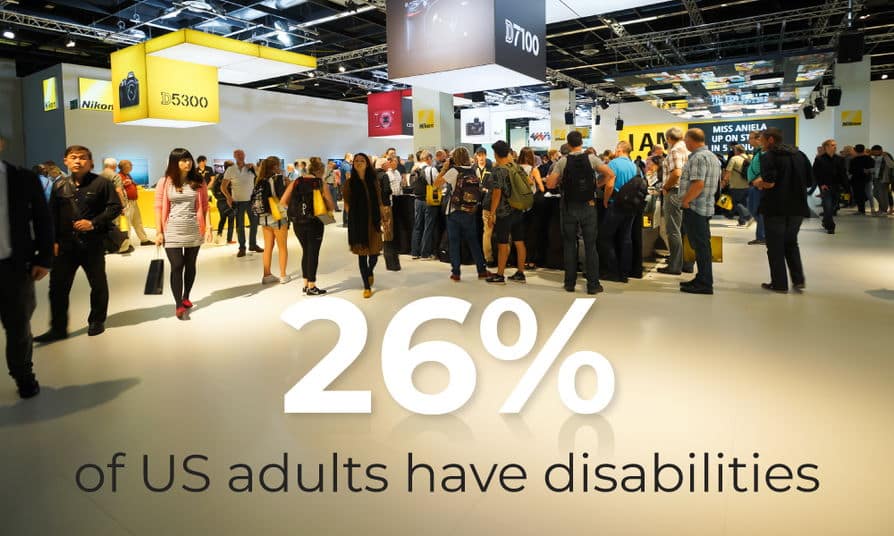
Creating an accessible trade show booth extends beyond the physical and communicative aspects; it also involves crafting a universally welcoming environment that considers all attendees’ varied experiences.
This holistic approach includes considering multi-sensory experiences, lighting, scent management, and emergency preparedness. These additional considerations are crucial for ensuring that your booth is not only accessible but also comfortable and safe for everyone:
Multi-sensory Experiences
Engaging multiple senses can create a more inclusive and memorable booth experience. Incorporating elements that appeal to sight, sound, touch, and even taste means that attendees with different abilities and preferences can enjoy interacting with your brand.
A multi-sensory approach, from tactile models to audio descriptions and visually engaging displays, ensures that your booth is engaging for a broad audience.
Lighting
Adequate and even lighting throughout your booth is essential for visibility and comfort. It helps ensure that all signage is readable and that the space is navigable for individuals with visual impairments. Soft, non-glaring lights can create a warm and inviting atmosphere, making your booth a welcoming space for in-depth conversations and engagement.
Scent-free Environment
Minimizing strong scents within your booth helps create an accessible space for individuals with sensitivities or allergies. A scent-free or low-scent environment ensures attendees can focus on your brand and products without discomfort, making your space welcoming.
Emergency Preparedness
Ensuring that your booth has accessible exits and clear evacuation routes is paramount for safety. Attendees should feel confident in their ability to quickly and safely leave the space in an emergency. Clear signage and unobstructed paths contribute to a safe environment, underscoring your commitment to attendee well-being.
Key Takeaways
- Inclusive Design is Key: Embrace accessibility in your trade show booth to welcome a wider audience, including individuals with disabilities, enhance brand reputation, and ensure ADA compliance.
- Accessibility as Investment: Making your booth accessible isn’t just about following laws; it’s a strategic choice that broadens market reach and solidifies your brand as socially responsible.
- Physical and Communication Accessibility: Focus on removing barriers through thoughtful booth layout, clear signage, staff training, and providing materials in various formats to accommodate all attendees.
- Go Beyond the Basics: Incorporate multi-sensory experiences, ensure even lighting, maintain a scent-free environment, and prepare for emergencies to create a comfortable and safe space for everyone.
- Continuous Commitment: Accessibility is a journey, not a one-time effort. Use resources like the ADA National Network and local advocacy groups to keep improving and show the world the inclusive heart of your brand.
Frequently Asked Questions (FAQs)
Addressing these inquiries is essential for ensuring your booth is not only compliant but also welcoming and engaging for all attendees:
What are the legal requirements for trade show booth accessibility?
The Americans with Disabilities Act (ADA) sets forth the legal requirements for accessibility, which include ensuring that booths are navigable for individuals using wheelchairs or other mobility aids, providing information in accessible formats (e.g., Braille, large print, audio descriptions), and ensuring that interactive components can be used by everyone, regardless of physical ability.
How can I design an accessible booth without compromising aesthetics?
Design an accessible, visually appealing booth with contrasting colors, multi-level displays, and functional furniture. To add modern, accessible elements, incorporate touchscreens at varying heights and seated virtual reality experiences.
What resources are available to help me make my booth accessible?
Several resources can enhance trade show booth accessibility. The ADA National Network provides ADA compliance guidance, while organizations like the Center for Accessible Technology and the Global Initiative for Inclusive ICTs offer practical tips. Consulting with local disability advocacy groups can also provide tailored advice on booth design.
What are some creative ways to make my booth inclusive for people with disabilities?
Inclusivity can be enhanced through various creative strategies:
- Provide interactive elements at various heights and with tactile feedback for those with visual impairments.
- Use augmented reality (AR) apps to narrate or describe visual elements to visitors.
- Include sign language interpreters for presentations or as part of your staff for the deaf or hard of hearing.
- Create quiet zones or sensory rooms for individuals who might get overwhelmed by the busy environment of a trade show.
- To accommodate different needs, offer materials in multiple formats, including digital copies that can be accessed through QR codes.
Wrapping up our discussion on trade show booth accessibility, remember that it’s more than meeting standards—it’s about genuine inclusivity. Ensuring your booth is accessible to everyone not only complies with accessibility laws but also demonstrates your commitment to welcoming all attendees.
Each step towards enhancing accessibility shows that your brand values every visitor’s experience. By investing in trade show booth accessibility, you’re not only broadening your audience but also showcasing your brand’s dedication to diversity and inclusion. This approach doesn’t just open doors—it opens minds.
Ready to transform your trade show presence? At Blue Atlas, our trade show marketing services include designing booths that prioritize accessibility for all. Let’s create an inviting, inclusive environment that amplifies your brand’s reach and impact. Contact us today to ensure your booth embodies true accessibility!


